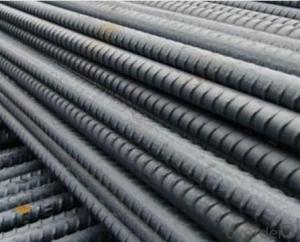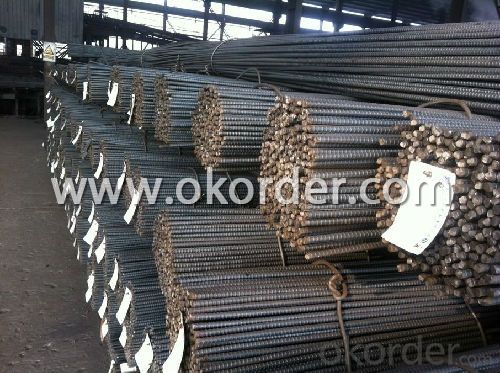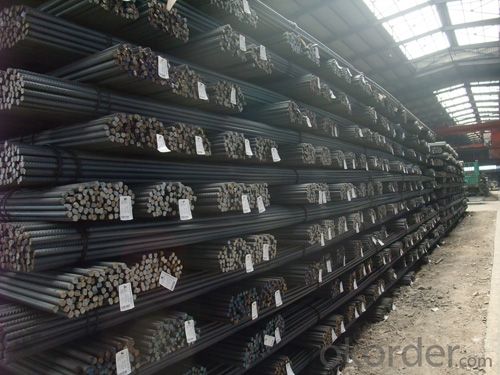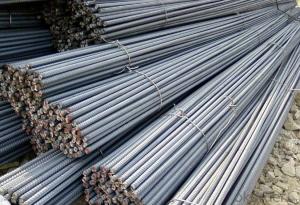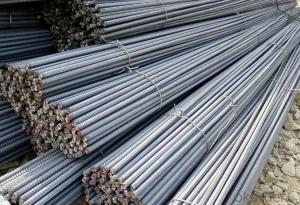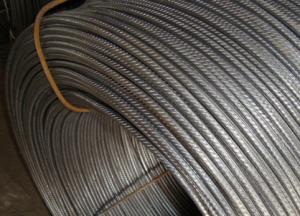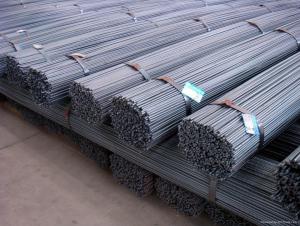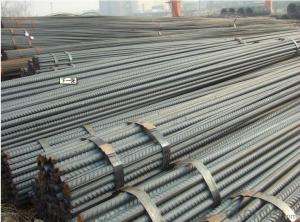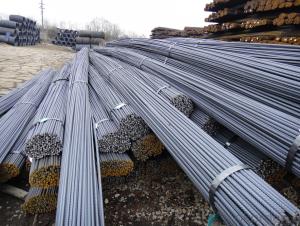GB STANDARD HIGH QUALITY HOT ROLLED REBAR
- Loading Port:
- Tianjin
- Payment Terms:
- TT OR LC
- Min Order Qty:
- 50 m.t.
- Supply Capability:
- 100000 m.t./month
OKorder Service Pledge
OKorder Financial Service
You Might Also Like
Product Description:
Appearance: Black
Technique: Slitting hot rolled steel coil
Grade: Q235, Q195,A36 SS400 S235jr.St37-2
Standard: AISI,GB,DIN,ASTM,EN,JIS
Length: 6m, 9m, 12m or as your requirement.
Width: 10mm-1010mm
Thickness: 1.5mm-20mm
Business type: big manufacture
Place of origin: Tianjin China (Mainland)
Packaging Details: In bundles for exporting and sea worthy
Delivery Detail: Within 15-35 days after receiving L/C or deposite T/T
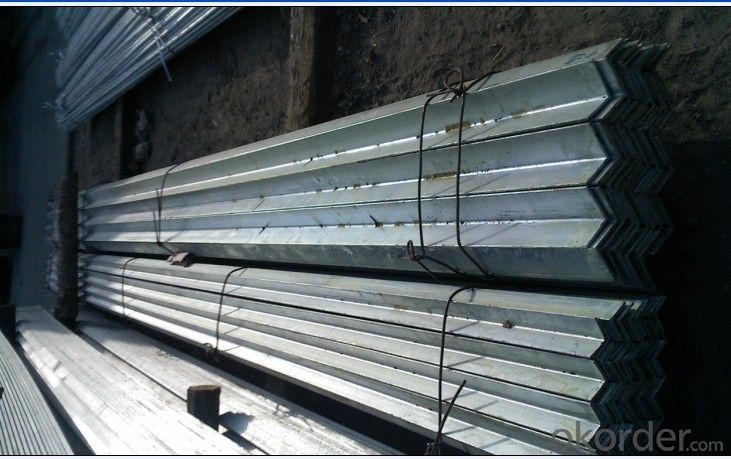
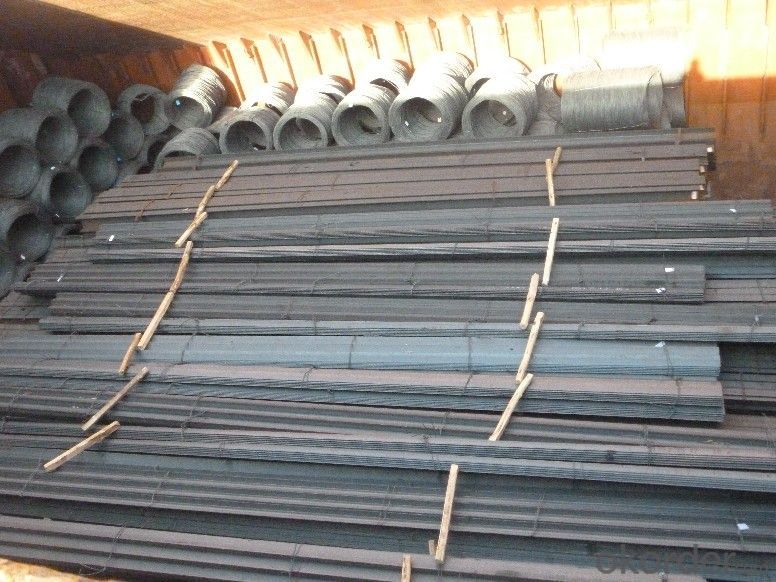
General specification as below:
Flat Bar Specification | |||
Width (mm) | Thickness (mm) | Length (m) | Theoretical Weight (kg/m) |
20 | 2.0 | 6/9/12 | 0.31 |
20 | 2.5 | 6/9/12 | 0.39 |
20 | 2.75 | 6/9/12 | 0.43 |
25 | 2.5 | 6/9/12 | 0.49 |
25 | 3.75 | 6/9/12 | 0.74 |
30 | 2.5 | 6/9/12 | 0.59 |
30 | 3.5 | 6/9/12 | 0.82 |
30 | 9.75 | 6/9/12 | 2.30 |
40 | 3.5 | 6/9/12 | 1.10 |
40 | 4.75 | 6/9/12 | 1.50 |
40 | 11.75 | 6/9/12 | 3.69 |
50 | 2.75 | 6/9/12 | 1.08 |
50 | 4.5 | 6/9/12 | 1.77 |
50 | 9.75 | 6/9/12 | 3.83 |
60 | 5.5 | 6/9/12 | 2.60 |
60 | 7.5 | 6/9/12 | 3.53 |
60 | 11.5 | 6/9/12 | 5.42 |
80 | 5.5 | 6/9/12 | 3.45 |
80 | 7.5 | 6/9/12 | 4.71 |
80 | 11.75 | 6/9/12 | 7.38 |
100 | 3.25 | 6/9/12 | 2.55 |
100 | 4.75 | 6/9/12 | 3.73 |
100 | 7.5 | 6/9/12 | 5.89 |
120 | 9.75 | 6/9/12 | 9.18 |
120 | 11.75 | 6/9/12 | 11.07 |
150 | 9.75 | 6/9/12 | 11.48 |
150 | 11.5 | 6/9/12 | 13.54 |
150 | 13.5 | 6/9/12 | 15.90 |
160 | 11.75 | 6/9/12 | 14.76 |
200 | 9.5 | 6/9/12 | 14.92 |
250 | 5.75 | 6/9/12 | 11.28 |
340 | 7.75 | 6/9/12 | 20.68 |
Products Advantages
1. high quality competitive price and Accurate in size
2. high dimensional accuracy
3. Guaranteed raw material
4.high utilization rate of material
5.convenient in construction, saving much time and labor
6. high mechanical strength
Application: Widely used for construction, Ship building, Machinery manufacturing ,steel structure,agriculture and steel grating.
- Q: Are there any limitations on the maximum number of steel rebars that can be used in a concrete element?
- Yes, there are limitations on the maximum number of steel rebars that can be used in a concrete element. These limitations are usually specified by building codes, structural design standards, and engineering principles. The maximum number of rebars is determined by factors such as the size and dimensions of the concrete element, the load it needs to support, and the required spacing and arrangement of rebars to ensure proper reinforcement and structural integrity.
- Q: Can steel rebars be used in solar power plant construction?
- Yes, steel rebars can be used in solar power plant construction. Steel rebars are commonly used as reinforcement in concrete structures, including the foundations and structural components of solar power plants. They provide strength, durability, and stability to the construction, ensuring the long-term performance and safety of the solar power plant.
- Q: What is the effect of exposure to chemicals on steel rebars?
- Exposure to chemicals can have various effects on steel rebars depending on the specific chemical involved. Corrosive chemicals, such as acids or salts, can cause corrosion and weaken the steel rebars over time. This can compromise the structural integrity of reinforced concrete structures, leading to potential safety hazards. On the other hand, some chemicals like epoxy or protective coatings can be applied to steel rebars to enhance their resistance to corrosion and extend their lifespan. Overall, the effect of exposure to chemicals on steel rebars can range from degradation to protection, highlighting the importance of proper material selection and maintenance in construction projects.
- Q: What is the effect of aging on the properties of steel rebars?
- The properties of steel rebars can be impacted both positively and negatively by the process of aging. Aging involves gradual changes in the microstructure and mechanical properties of the rebars over time. One positive effect of aging is the enhancement of strength and hardness. Aging causes the carbon atoms in the steel to form carbides, resulting in increased strength. This strength improvement is advantageous in structural applications as it provides additional support and resistance against external forces and loads. On the other hand, aging can also have detrimental effects on steel rebars. As the rebars age, they become more vulnerable to corrosion. The formation of carbides during aging creates areas of low carbon content, known as decarburization, which increases the likelihood of rust and corrosion. This compromises the structural integrity of the rebars and reduces their lifespan. Moreover, aging can make the steel rebars more brittle. Changes in the microstructure during aging lead to increased brittleness and decreased ductility. This makes the rebars more prone to cracking and failure, especially under excessive loads or extreme temperatures. In conclusion, aging has a complex impact on the properties of steel rebars, with both positive and negative consequences. While aging can strengthen the rebars, it also raises the risk of corrosion and embrittlement. Proper maintenance and monitoring are crucial to mitigate the negative effects of aging and ensure the long-term performance and durability of steel rebars in structural applications.
- Q: What are the limitations of using steel rebars?
- There are several limitations associated with using steel rebars in construction projects. Firstly, steel rebars are susceptible to corrosion. When exposed to moisture and oxygen, they can start to rust over time. This corrosion weakens the rebars and compromises the structural integrity of the concrete. To mitigate this issue, rebars are usually coated with epoxy or other protective coatings, but these coatings can deteriorate over time and require maintenance. Secondly, steel rebars have a high thermal expansion coefficient. This means that they expand and contract significantly with changes in temperature. This can lead to stress and cracking in the concrete, particularly in regions with extreme temperature variations. To minimize these effects, engineers often use expansion joints or other techniques to accommodate the thermal expansion of the rebars. Additionally, steel rebars are heavy and can be challenging to handle and transport. Their weight can increase the overall weight of the structure, which may require additional support or reinforcement. Moreover, the transportation of steel rebars to construction sites can be costly and time-consuming. Furthermore, steel rebars are a finite resource and their production has an environmental impact. The extraction and production of steel require significant amounts of energy and can contribute to greenhouse gas emissions. Additionally, the depletion of natural resources required for steel production is a concern. Lastly, steel rebars are conductive to heat and electricity, which can pose safety risks in certain situations. For example, in areas prone to lightning strikes, the presence of steel rebars can increase the likelihood of electrical damage. In conclusion, while steel rebars are widely used in construction due to their strength and durability, they have limitations such as susceptibility to corrosion, thermal expansion issues, high weight, environmental impact, and electrical conductivity. It is crucial for engineers and architects to consider these limitations and employ appropriate measures to address them in construction projects.
- Q: Can steel rebars be used in structures with high wind loads?
- Yes, steel rebars can be used in structures with high wind loads. Steel rebars provide strength and reinforcement to concrete, making them suitable for withstanding high wind forces.
- Q: What is the bending radius allowed for steel rebars?
- The bending radius allowed for steel rebars varies depending on the diameter of the rebar. Generally, the minimum bending radius for steel rebars is about four times the diameter of the bar.
- Q: Can steel rebars be recycled after demolition?
- Yes, steel rebars can be recycled after demolition. Steel is one of the most commonly recycled materials, and rebars are no exception. After demolition, steel rebars can be collected, sorted, and sent to recycling facilities where they are melted down and reused to make new steel products. This recycling process helps reduce waste and conserve resources.
- Q: How are steel rebars anchored into concrete?
- To securely fix steel rebars into concrete, various methods are employed. One commonly used approach involves the utilization of mechanical anchors, such as anchor bolts or anchor plates. These mechanical anchors are introduced into the concrete prior to its setting, and subsequently, the rebars are fastened to them using nuts, washers, or other fastening devices. This technique establishes a reliable and robust connection between the rebars and the concrete. Another method employed in anchoring rebars into concrete involves the use of epoxy or adhesive anchors. In this particular approach, a specialized epoxy or adhesive substance is applied to the rebars, which are then inserted into pre-drilled holes in the concrete. The epoxy or adhesive subsequently solidifies, forming a powerful bond that securely anchors the rebars to the concrete. Additionally, mechanical couplers can also be employed to anchor rebars into concrete. These couplers serve the purpose of connecting two rebars together, creating a continuous reinforcement. The installation process involves threading the rebars into the coupler and subsequently tightening them together using wrenches or other tools. This method ensures a seamless connection between the rebars, eliminating the need for overlapping or lapping of rebars and saving valuable time and materials. In conclusion, the anchoring of steel rebars into concrete is a vital step in the construction process, as it guarantees that the rebars provide the essential reinforcement and structural integrity to the concrete structure. The selection of the appropriate anchoring method is contingent upon several factors, including project-specific requirements, desired load capacity, and design specifications.
- Q: Can steel rebars be used in the construction of offshore platforms?
- Yes, steel rebars can be used in the construction of offshore platforms. Steel rebars are commonly used in the construction industry as reinforcing bars to provide strength, durability, and structural integrity to concrete structures. Offshore platforms, which are subjected to harsh environmental conditions and heavy loads, require robust construction materials like steel rebars to withstand these challenges. The use of steel rebars in offshore platform construction helps enhance the overall structural stability and longevity of the platforms.
Send your message to us
GB STANDARD HIGH QUALITY HOT ROLLED REBAR
- Loading Port:
- Tianjin
- Payment Terms:
- TT OR LC
- Min Order Qty:
- 50 m.t.
- Supply Capability:
- 100000 m.t./month
OKorder Service Pledge
OKorder Financial Service
Similar products
Hot products
Hot Searches
Related keywords
